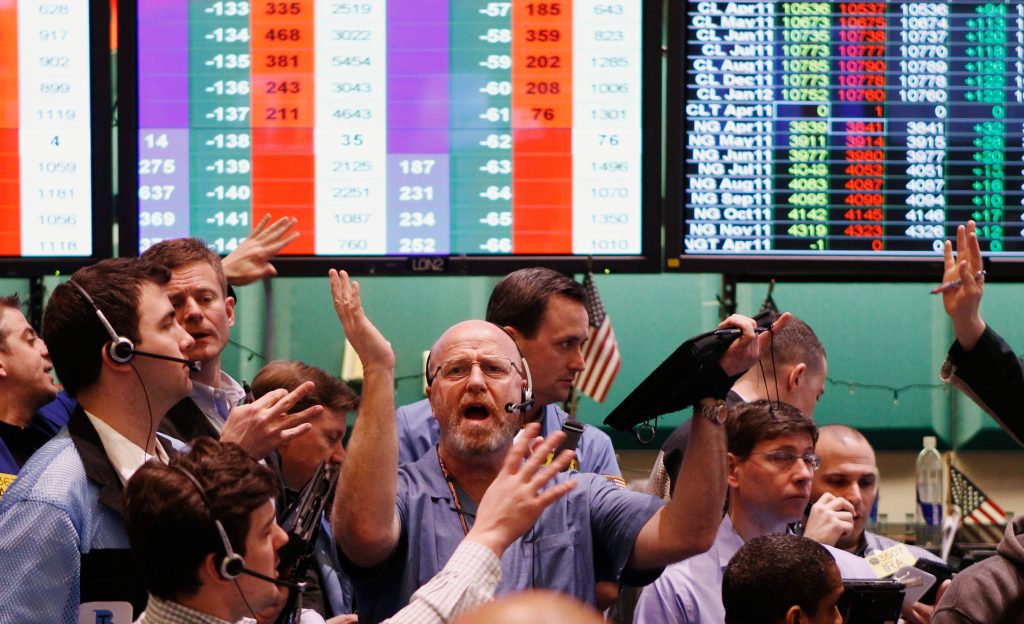- Recession risks have caused oil prices to slide in June, with Brent crude falling 7.8%.
- A rising number of commodities traders are betting that prices could even fall another 25% by December.
- The price of a barrel of crude crashed from $139 to $39 during the 2008 Great Recession.
The oil price is heading for its first monthly loss since last November, as fears of recession and demand destruction have hit sentiment, and the options market shows a growing numbers of investors are becoming increasingly bearish.
The factors that drove oil to decade-highs above $140 a barrel just a few weeks ago — surging demand and a potentially massive shortfall in supply thanks to sanctions on Russia over its war in Ukraine — are starting to shift.
Sky-high inflation is forcing central banks around the world to jack up interest rates, which can hit demand for commodities, and the chances of recession are rising.
Recessions often bring a drop in oil prices as consumer spending falls, reducing demand for fuel. The price of a barrel of crude fell from $139 to $39 in less than a year after the 2008 financial crisis.
While oil surged to nearly $140 a barrel after Russia invaded Ukraine in February, Brent has tumbled 7.8% to $107 a barrel this month as investors fret about an economic slowdown.
"Worries about recession and its potential negative impact on demand [are ripping] through cyclical commodities like oil," Saxo Bank strategists said.
The derivatives market shows investors are flocking to put options — a contract that gives the owner the right, but not the obligation, to buy a certain asset at a set price by a given date.
The SPDR Energy Select ETF (XLE), which is underpinned by some of the biggest US energy companies, is one of this year's standout stock-market performers, with a gain of 33%, versus a 12% loss in the S&P 500, thanks to soaring oil prices. But investor interest in puts reflects a creeping bearishness even in this sector.
Total holdings of puts on XLE have hit their highest on record, at 2.02 million lots, according to data from the New York Stock Exchange, and, more dramatically, trading in those options has surged this month.
Data from Bloomberg shows daily trading volume in XLE puts shot up to a peak of 839,000 lots on June 17. That volume retreated to 212,257 lots on Wednesday, but that leaves the 20-day average above 190,000 lots — the highest on record.
The Federal Reserve's 75 basis point hike last week has increased the odds of recession, according to Wall Street banks like Morgan Stanley and Wells Fargo. It's also made commodity traders significantly more skittish, analysts said.
"Growing fears over a recession have weighed on risk assets, and comments from [Fed chair] Jerome Powell… would not have helped," ING's head of commodities strategy Warren Patterson said, referring to Powell's recent Congressional testimony.
Some investors even see a scenario in which oil prices slide another 25% by the end of the year.
Options on Brent crude futures — the global benchmark price — show traders are starting to ramp up their bets that today's price of around $100 a barrel may not last into the end of the year, as rising interest rates slow down demand for anything from crude, to gasoline to jet fuel.
The second-most popular option right now for Brent futures that expire in December is a put that gives the holder the right to sell at $85 a barrel, down from $111 right now, based on data from the Intercontinental Exchange.
Holdings, known as open interest, in $85 puts has grown to around 21,795 lots, up from 19,360 lots just a month ago. Meanwhile, investors have been building up holdings in puts at $75, which would mark a roughly 25% drop from current levels, and open interest has grown to 17,538 lots, from 15,684 a month ago.
The most popular option for December is still calls at $120 a barrel, but only just. At 23,806 lots, it's neck and neck with holdings of fairly bearish puts.
